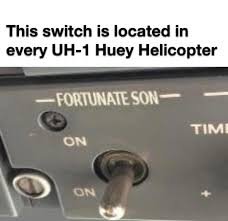LBJ runs again in 1968 and wins, so maybe four more years of McNamara? Yay? But hey, maybe the full run of 265 FB-111s, perhaps even some of them of the FB-111B/C variety. Maybe even more F-111Fs. I don't know if the F-14 would happen, but I suspect maybe. B-1 might be dead since apparently McNamara didn't care for it, so upgraded B-52s and FB-111H might be the way to go while waiting for the B-2.
No Vietnam means the fighter mafia can't get a foothold. F-15 program is more like 60,000 pound strike eagle than air superiority. LWF probably doesn't happen, which Mirage F-1E wins the deal of the century, 70s version. Between that and no F-15 "fighter", more sales for the F-14 and maybe room for the Mirage 4000. But no F-16 also means the Northrop P-530 is more likely. I can see that taking F-16s sales as well, so Dassault and Northrop split the pie.
Having read up on the Air Force's history of F-15 development, I do think the F-15 will still show up in close to its OTL guise. There was a strong contingent in the Air Force advocating a maneuverable heavy air superiority fighter even before Vietnam, and Boyd's E-M theories also predate the war. Conversely, F-15 development was also significantly influenced by outside developments that are still going to happen even without Vietnam, namely the MiG-25 scare and the Six-Day War.
The aforementioned Air Force history:
https://media.defense.gov/2012/May/16/2001330012/-1/-1/0/AFD-120516-036.pdf
The F-14 definitely still happens, the USN will
not let themselves be stuck with the F-111B and a small air war reminding everyone of the need for fighter escort is IMO fairly likely without Vietnam.
I really don't know what the Soviets would be up to. Su-24, yes. Su-25, 27, and MiG 29? I don't know to what extent those were reactions to U.S. developments and experiences, and to what extent they were independent. MiG-25 would still be around though, so the USAF might wind up having the F-14/Aim-54 forced on it. Unless F-12 tooling is still around.
The Su-25 was partially a response to USAF experience in Vietnam, but it was also a response to their own exercises, so I think it'll go through.
The Su-27 and MiG-29, on the other hand, were direct counters to American developments; the MiG-29 more than the Su-27, as the Su-27 had more specific missions intended, namely long-range intercept (replacing the Tu-28, Su-15, and Yak-28P), escort of Su-24 deep strikes, and as an intruder targeting AWACS aircraft. That said, given I think the F-15 was going to happen regardless I think they'd still be developed.
~o~
As far as the low-end of the USAF, that's a very good question. I do agree that it's likely the A-10 doesn't materialize, and the Air Force is not buying the A-7, either; the A-7 buy was a response to early Vietnam experience. Still, the force needs something to replace the Super Sabre in their lineup with how expensive the F-15 and F-111 both proved, and there was significant push, in addition to the F-X, to acquire an advanced day fighter that could perform strike and air combat.
IOTL the ADF was back-burnered in the Foxbat panic. I'd expect that to happen again, but without the A-7 and with the F-100 aging fast, they need an interim fighter. Enter the F-5, which IOTL was actually considered in competition with the A-7 and preferred by the Air Force until McNamara's drive for commonality got the A-7 over the hump. And from there it's a hop, a skip, and a jump to the Cobra and/or the Tigershark.

